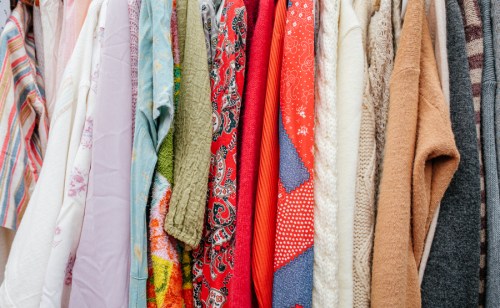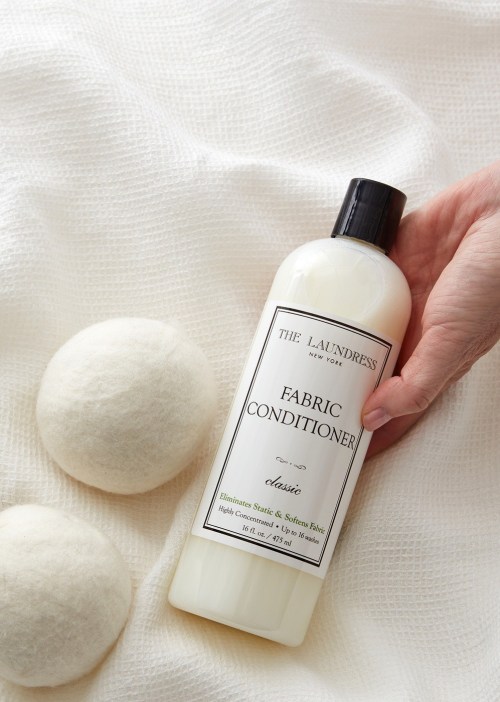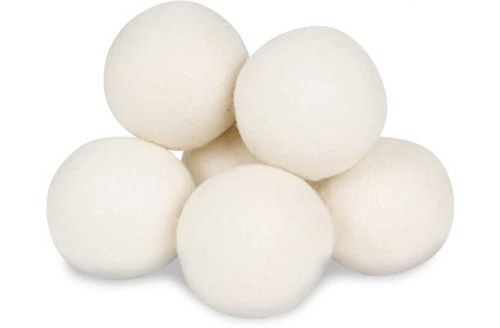Our editors independently select these products. Making a purchase through our links may earn Well+Good a commission
A Laundry Pro Explains the Difference Between Fabric Softener, Fabric Conditioner, and Dryer Sheets
Laundry expert explains how to make your clothes soft and the differene between fabric softeners, fabric conditioners, and dryer sheets.

Laundry is about more than keeping your clothes clean. Done the right way, it extends the life of your clothes. Products like fabric softeners, fabric conditioners, and dryer sheets are designed to help you out during the cleaning process. To keep your clothes in great shape and make them soft in the process, Lyndsee Campbell, laundry expert and marketing director at laundry cleaning company Laundry Care, knows exactly how to use each product for the best results.
Experts in This Article
Lyndsee Campbell is a laundry expert and marketing director at laundry cleaning company Laundry Care.
These three products “basically do the same thing,” says Campbell. “The goal is to reduce the wrinkles and the static. And a lot of people like that it provides the fragrance.”
Campbell says that fabric conditioner is just a fancy word for fabric softener. “It’s more of a marketing tactic,” says Campbell. “From everything that I’ve really read about ingredients and anything like that, it’s really the same stuff.” These products are added to your washing machine and released during the rinse cycle to leave an invisible residue on your clothes to help them wear better.
Dryer sheets are coated in a substance similar to fabric softeners and conditioners and soften your clothes and remove static by melting onto your clothes. Because dryer sheets work in the dryer, they’re much less potent than fabric softeners or conditioners.
Best practice for using fabric softeners and conditioners
Campbell says fabric softeners and conditioners are best used on natural fibers that can lose their shape or pill with wear.
“Specifically with things that stretch a lot, knits and cotton T-shirts, it can help retain the shape of the collar and the shoulders and where the underarms, the armholes and the cuffs, and the hem…because those tend to get kind of stretched sometimes after a few wears,” she says. “With sweaters, when you have the friction between your arm and the body of the sweater and then [friction] with linen pants with between the legs. You might find that there’s a lot of pilling that would go on, and the fabric softener/conditioner would help with that.”
Fabric softeners and conditioners leave behind a coating, which can damage certain fabrics. Campbell says while they’re great for natural fibers like cotton or wool, they’ll ruin your exercise clothes. “When you’re leaving that residue on the athletic wear, basically, it’s collecting your sweat and holding it hostage,” says Campbell. And sometimes detergent won’t be enough to fix that, she adds. Additionally, children’s pajamas are legally required to be flame retardant, and fabric softeners can lessen that effect.
You also want to keep fabric softeners and conditioners far away from your towels.
“Everyone wants soft and fluffy towels that smell really fresh and clean. But what do you use towels for? Drying,” says Campbell. When you use fabric softener or conditioner, “you’re drying with something that has a lipid or waxy coating is that it’s not able to really fully absorb like you would want it to.”
Although fabric softeners and conditioners can make your clothes feel nice, Campbell says she doesn’t use them often, personally or professionally. “As a company, our providers don’t really use a fabric softener on a regular basis,” says Campbell. “Dryer sheets, they would use more often. And we suggest using the free and clear kinds.” That’s because most fabric softeners conditioners are made with waxy lipid substance that’s derived from animal fat. To avoid this, Campbell uses vegan products like The Laundress Fabric Conditioner ($19). But most of the time, she and her team are using white distilled vinegar ($13), which reduces static as well as softening.

The Laundress Fabric Conditioner — $19.00
What to use in the dryer
Because dryer sheets are coated in a substance similar to fabric softeners and conditioners, you should still be wary of using it on synthetic materials like exercise clothes. However, Campbell says you’re better off skipping dryer sheets and using wool dryer balls. “Five to six of those in every load softens your clothes. And everything comes out wrinkle-free,” says Campbell.

Smart Sheep Wool Dry Balls 6 Pack — $17.00
“What dryer balls won’t help with or don’t help as much with is the static,” she says. “But the solution for that is foil balls.” Campbell says to loosely make a small ball of aluminum foil. “If you put your pointer finger and your thumb together, [the ball should be] about that big,” she says.
Two or three foil balls tossed in the dryer remove the negative ions, which are what create the static, explains Campbell. You can reuse them load after load until you notice them begin to break apart. “You don’t want little aluminum flakes all over your stuff,” she says. Alternatively, she says a big safety pin attached to a washcloth or microfiber cloth will do the same trick.
Opting for sustainable laundry care
When buying laundry care products, Campbell says buying sustainable, vegan options is the way to go.
“It’s not just for their eco-friendliness, sustainability, not using animal fats, which is gross. But also just the expense,” says Campbell. “When you’re buying these products over and over and over again, they’re just expensive.” If you can get the same result from something like reusable dryer balls, why not use them?
Oh hi! You look like someone who loves free workouts, discounts for cult-fave wellness brands, and exclusive Well+Good content. Sign up for Well+, our online community of wellness insiders, and unlock your rewards instantly.
Sign up for the Well+Good SHOP Newsletter
Get exclusive deals on wellness, beauty, fitness, and food products that have been hand-picked by our editors.
Got it, you've been added to our email list.









